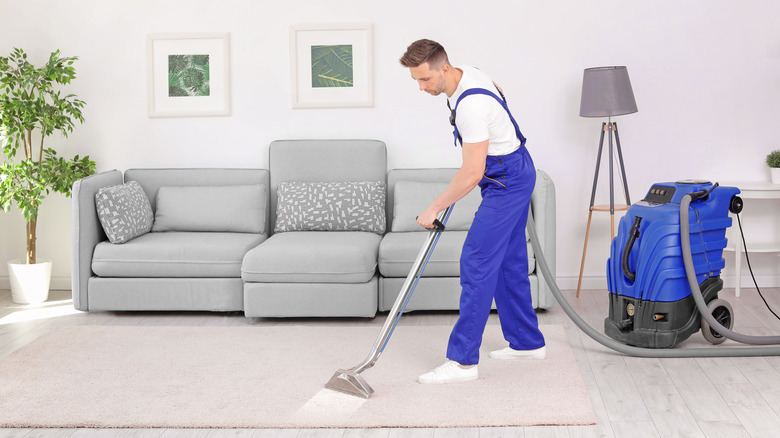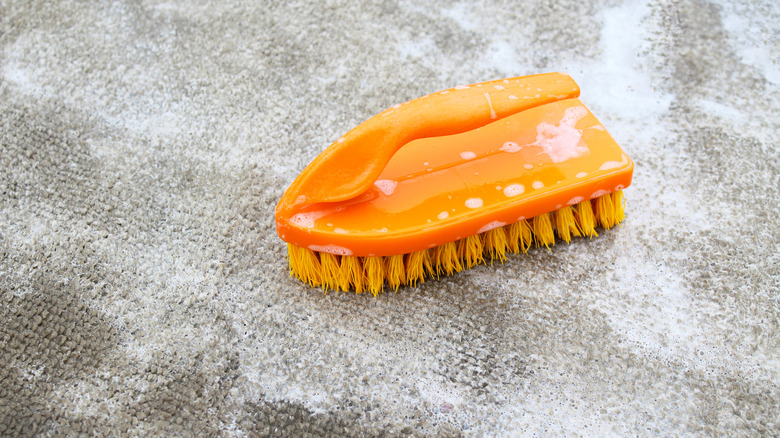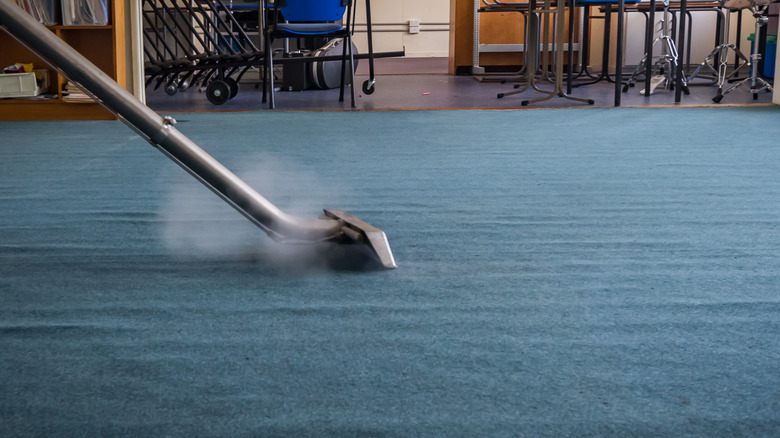How To Dye Your Carpet For A Fresh New Look
After years of wear and tear, carpets tend to stain, lose luster, or just look dingy over time. Many people would think that the only solution is an expensive, full replacement, but there's another, less well-known option: dyeing. Carpet is typically made of synthetic fibers like olefin, nylon, polyester, or occasionally, natural fiber like wool, via Flooring America. Wool and nylon varieties are easy to dye to help conceal sun-faded areas and stains and give your carpet a fresh look.
It is recommended to hire a professional to help you stain your carpet, especially if you don't have much experience, but with a bit of research and some tools, it can become a DIY job. Opting to dye your carpet instead of fully replacing it is a great way to save time and money; doing it yourself can give you even more bang for your buck. Keep reading to learn more about the project and how to tackle something like this yourself.
The preparation
The bulk of the carpet dying process lies in preparation. Starting with a dirty base that contains dust, pet hair, and debris can affect the results of the dye job, so it's essential to get your floors as spotless as possible before applying the dye, via Americolor Dyes.
The first step is to remove all furniture from the area. Give your floors a good vacuum and pick up any lost objects or toys behind the couch. Once everything is cleared out, bring in a carpet cleaner. If you're not looking to buy, they're often available for rent per day at home improvement stores. Thoroughly shampoo your carpet and go over each area a few times to lift any stubborn grime. Once done, allow the site to dry until the carpet pad underneath isn't wet to the touch. You can dab the floor with towels or let it air dry, but giving it time to air out before moving on to the dyeing process is essential.
How to dye
After you've cleaned your carpet and let it dry, it's time to move on to the fun part. According to Americolor Dyes, it's a good idea to change into clothes you don't mind ruining — wearing gloves, and protective glasses won't hurt, either. Tape off anything you want to keep dye-free, and then follow the instructions on your dye bottle. It's a good idea to do a spot test in a corner or area typically covered by furniture to ensure that the dye works and is the correct color before fully committing.
If you're confident you have the right mix, fill a spray bottle with the dye and work evenly coating your carpet. After you're done, rake through the fibers and make sure everything is covered and there aren't any sparse angles. Allow everything to dry one last time, and you'll be left with a brand-new carpet for a fraction of the replacement price.


